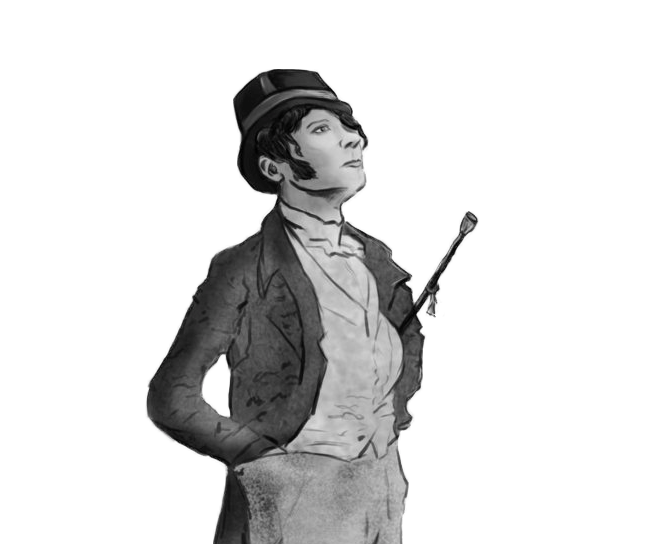
Strolling is the gastronomy of the eye. To walk is to vegetate, to stroll is to live.
Honoré de Balzac
It is always a good time to learn how to do nothing. If you think more clearly about it, doing nothing is an art. With all the attention scams and hypes around us, whether they come from newspapers, or from social media, it might be hard to preserve the basic joy of simply wandering through the world, sensually observing what is happening, without any particular aim in mind.
Bellow are 5 classic books filled with flaneur thinking and events. Of course, more books and authors could be added here: the works of Dickens, Gerard de Nerval, Flaubert, Balzac, Sartre and so on. So I guess all of those could be read in order to get some inspiration for flaneur wandering.
Edgar Allan Poe – The Man of the Crowd (1840)
“The Man of the Crowd”, a short story and the cornerstone of flaneur thinking and writing, that inspired Baudelaire who translated it into French.

“The old man,” I said at length, “is the type and the genius of deep crime. He refuses to be alone. He is the man of the crowd. It will be in vain to follow, for I shall learn no more of him, nor of his deeds.”
Charles Baudelaire – The Painter of Modern Life (1863)
Baudelaire entire collection called Paris Spleen (especially “Crowds” from it) might be read alongside The Painter of Modern Life. In both of the books, Baudelaire gives great accounts of what a flaneur does and how he thinks.

For the perfect idler, for the passionate observer, it becomes an immense source of enjoyment to establish his dwelling in the throng, in the ebb and flow, the bustle, the fleeting and the infinite. To be away from home and yet to feel at home anywhere; to see the world, to be at the very center of the world, and yet to be unseen of the world. Such are some of the minor pleasures of those independent, intense and impartial spirits, who do not lend themselves easily to linguistic definitions.
Walter Benjamin – Charles Baudelaire: A Lyric Poet in the Era of High Capitalism (1969)
After Baudelaire, Walter Benjamin was the key figure in putting the soul into the figure of the flaneur. Unfortunately, he never got to fully finish his Arcades Project, hailed by many as one of the greatest efforts of cultural criticism. Luckily, the parts about the Paris and Baudelaire are published. As with Baudelaire, there is really no need to stop with only one of Benjamin’s reads: his essays in One-Way Street or Illuminations are a primer example of literature and essayistic writing.

The flaneur only seems to break through this “unfeeling isolation of each in his private interest’’ by filling the hollow spaces created in him by such isolation, with the borrowed and fictitious – isolations of strangers.
Robert Musil – The Man Without Qualities (Vol. 1) (1930)
If Baudelaire writes about Paris, and Woolf about London, Robert Musil creates a flaneur straight out of Vienna. The Man Without Qualities is by all criteria one of the best novels of the 20th century. According to some, Musil is the one who brought the flaneur into the 20th century.

Like all big cities, it consisted of irregularity, change, sliding forward, not keeping in step, collisions of things and affairs, and fathomless points of silence in between, of paved ways and wilderness, of one great rhythmic throb and the perpetual discord and dislocation of all opposing rhythms, and as a whole resembled a seething, bubbling fluid in a vessel consisting of the solid materials of buildings, laws, regulations, and historical traditions.
Rainer Maria Rilke –The Notebooks of Malte Laurids Brigge (1910)
Rilke’s only, semi-autobiographical novel – about a poet living in Paris.

I am learning to see. I don’t know why it is, but everything enters me more deeply and doesn’t stop where it once used to. I have an interior that I never knew of… What’s the use of telling someone that I am changing? If I’m changing, I am no longer who I was; and if I am something else, it’s obvious that I have no acquaintances. And I can’t possibly write to strangers.
Thomas De Quincey – Confessions of an English Opium Eater (1821)
De Quincey popularized the recreational use of drugs. So Confessions are the result of his usage of at a time popular painkiller and his wanderings around London.

The silence was more profound than that of midnight: and to me the silence of a summer morning is more touching than all other silence, because, the light being broad and strong, as that of noon-day at other seasons of the year, it seems to differ from perfect day, chiefly because man is not yet abroad: and thus, the peace of nature, and of the innocent creatures of God, seems to be secure and deep, only so long as the presence of man, and his restless and unquiet spirit, are not there to trouble its sanctity.
Virginia Woolf – The London Scene: Six Essays on London Life (1931-1932)
As with Dickens, among Virginia Woolf’s works there are flaneurs to be found as well. The London Scene is a collection of her essays where she uncovers details of a metropolis and her hometown.

This loud, bustling and vulgar street reminds us that life is a struggle; that all construction is perishable; that every exhibition is vanity.
